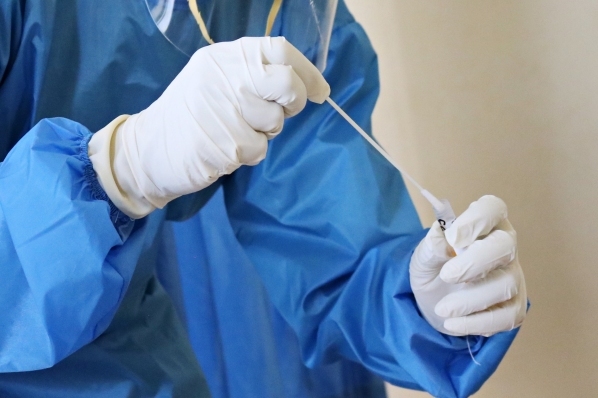Investigating Mesothelioma Metastasis
By Warren Miller. 28th July 2022
Metastasis is the spread of cancer cells from the place where they first formed to another part of the body. Mesothelioma, one of the rarest and deadliest cancers, is no different. In fact, it often spreads faster than most other cancers. Mesothelioma forms in linings that are made up of fluid and tissue. This tissue is called the mesothelium.

Pleural mesothelioma forms in the thin lining that separates the lungs from the chest wall. This flexible coating of tissue and fluid allows the organs to expand safely against the chest.
Metastatic pleural mesothelioma (80% of cases) occurs when malignant cells spread from the lining of the lungs.
Peritoneal mesothelioma is in the thin lining of the abdominal cavity, which forms a protective coating around the abdominal cavity’s organs. Metastatic peritoneal mesothelioma is the spread of cancer from the abdomen to other parts of the body.
When mesothelioma cells metastasize, they typically travel through the bloodstream or lymphatic system to distant sites. Once mesothelioma cells have spread around the body, they can invade organs and cause secondary tumours to develop.
When Does Mesothelioma Metastasize?
Metastasis of Mesothelioma is determined by the stage of the cancer, the cell type and treatment. Cancer cells can spread locally, regionally and distantly. Distant metastases occur in between 10% and 50% of stage 4 mesothelioma cases.
In stages 1, 2 and 3, cancer cells spread locally within the bodily cavity where they developed and regionally to lymph nodes. In stage 4, mesothelioma metastasizes to distant parts of the body.
Where Does Pleural Mesothelioma Metastasize to?
The pleura is very close to the lungs, so they are usually the first organs affected by pleural mesothelioma. The cancer may also spread towards the chest wall, which make it more difficult to remove with surgery. Pleural mesothelioma can spread via lymph nodes and bloodstream in or near the lung cavity. The lymphatic system is responsible for tissue drainage, fat transportation and immune response.
The cancer may metastasize to the:
- Kidneys
- Adrenal glands
- Liver
- Brain
- Central nervous system (spine)
- Heart
In a study of 171 cases, the liver was the most common organ or area showing mesothelioma metastasis. It occurred in 55.9% of cases. Other areas occurred in the following percentages:
- Adrenal glands (31.3%)
- Kidneys (30.1%)
- The opposite lung (26.8%)
- Brain (3%)
Less common is a spread to the tongue, thyroid gland and esophagus.
Where Does Peritoneal Mesothelioma Metastasize to?
The abdominal cavity’s construction limits how far peritoneal mesothelioma can spread. In its early stages, peritoneal mesothelioma generally does not spread beyond the peritoneal cavity. Any of the organs in the abdominal cavity are in danger of being overrun by Mesothelioma. They include the:
- Stomach
- Small and large intestines
- Visceral peritoneal lining
- Abdominal lymph nodes
- Spleen
- Pancreas
- Liver
- Kidneys
Women’s abdomens also have the ovaries and uterus.
Some of these organs can be removed safely during surgery. For instance, the spleen is often removed during cytoreduction for peritoneal mesothelioma. Other organs cannot be removed. If the tumours spread from the abdominal cavity, they may reach the lungs, heart, thyroid and brain. About 50% of peritoneal mesothelioma cases have distant metastases found at autopsy.
Where Does Pericardial Mesothelioma Metastasize to?
A much rarer form of the cancer that affects the lining of the heart, Local spread of pericardial mesothelioma involves the pleura and lungs. Pericardial mesothelioma metastasizes in about 25% to 45% of cases to regional lymph nodes, lungs and kidneys.
Where Does Testicular Mesothelioma Metastasize to?
This cancer is extremely rare, but it may spread from the membrane that covers the testes to surrounding lymph nodes. When it metastasizes, which is rare, it spreads to spine, liver and lungs.
What Factors Influence Mesothelioma Metastasis?
Staging
By the time most people receive a mesothelioma diagnosis, the cancer may already be in the later stages of development. If the cancer has spread to distant parts of the body, treatment options tend to be palliative -relieve the symptoms and provide comfort rather than cure the disease.
Doctors use mesothelioma staging system to help gauge the progression of mesothelioma. Patients with mesothelioma at stage 1 or stage 2 have the least risk of metastasis and the best prognosis, living around two to three years.
Those with mesothelioma at stage 3 or stage 4 are the most at risk of metastasis and may already have distant metastases. This is the most difficult stage to treat because the cancer is spreading into vital organs. At this stage of development treatment is limited, leading to a life expectancy of less than a year.
Cell Type
The rate at which cancer grows and spreads depends in part on the cellular makeup of the tumours. Epithelial cell types are typically less aggressive and spread more slowly, with a better prognosis. In Sarcomatoid and biphasic cell types, mesothelioma will spread more quickly to other areas of the body, minimizing treatment options and reducing expected life span.
Prognosis may be affected by patient factors such as age and overall health, as well as available treatment options in each specific case.
What Are the Symptoms of Metastatic Mesothelioma?
It can be difficult for doctors to detect when mesothelioma has metastasized. Distant spread occurs late in the cancer’s development and doesn’t always cause noticeable symptoms.
If metastatic cancer symptoms do arise, they usually affect the location where the cancer has spread. However, some symptoms of mesothelioma metastases are no different from common symptoms of mesothelioma and other cancers. Doctors often discover metastases by chance after imaging scans or other tests.
Treatment of Metastatic Mesothelioma
If mesothelioma is diagnosed at an early stage then patients may have surgical procedures to reduce the risk of metastasis by removing tumours and cancer cells that may have led to spreading. Chemotherapy and radiation therapy can delay or prevent the cancer from spreading, and so can a new class of drugs called anti-angiogenesis therapy.
Radiation therapy is particularly effective at preventing local recurrence and sometimes used to treat tumours that develop in the chest wall. A new FDA-approved treatment for mesothelioma, known as Tumour Treating Fields, also delays or prevents mesothelioma metastasis.
If mesothelioma metastasizes, treatment will focus on controlling the cancer and its symptoms in addition to extending life span. Doctors often suggest palliative treatments that ease pain, improve quality of life and improve survival.
- Chemotherapy can delay metastasis, improve survival and reduce pulmonary symptoms
- Radiation therapy can prevent local recurrence and treat painful chest wall metastases
- Anti-angiogenesis drugs can slow or stop mesothelioma metastasis
- Tumour Treating Fields can delay or prevent mesothelioma from spreading
- Medications and physical therapies can treat pain caused by distant metastases
There are also clinical trials in emerging therapies such as immunotherapy and gene therapy that are showing promising results for patients with metastatic mesothelioma.
Please call the Freephone number below if you would like advice on claiming compensation for mesothelioma and other asbestos diseases.

Author
Warren Miller MSc. BSc
Claims manager and website author
Warren has been assisting victims of Mesothelioma and asbestos cancer for more than 18 years. He is also the senior technical author of this website, responsible for sourcing legal and medical material beneficial to those who may been recently diagnosed with an asbestos disease.. Read more >













